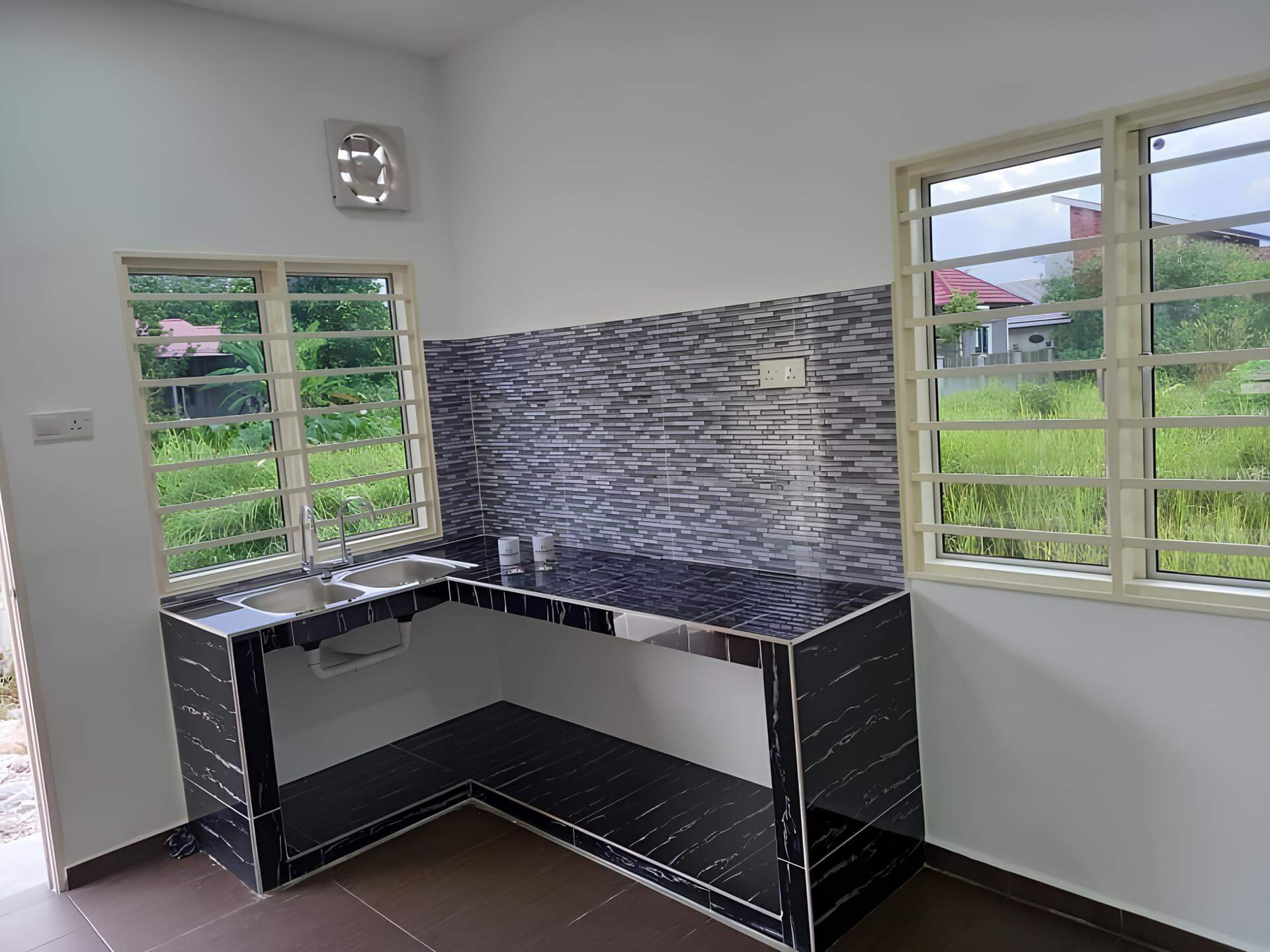Are you tired of watching your garden wilt under the scorching Malaysian sun while your wallet gets lighter with every water bill? Well, what if we told you there’s a savvy solution right above your head? That’s right! Rainwater harvesting is not just for the eco-warriors; it’s a practical way to keep your garden flourishing without draining your bank account. In a country blessed with so much rainfall, catching those precious droplets can be a game-changer for both your plants and your finances. So, grab a cup of kopi and let’s dive into how harnessing rainwater can help your garden thrive and keep your wallet happy at the same time!
Exploring the Basics of Rainwater Harvesting for Gardens
Rainwater harvesting isn’t just eco-friendly—it’s a smart strategy for any garden. By collecting and utilizing rainwater, you can provide your plants with the hydration they need while cutting down on your water bills. This method is especially beneficial in Malaysia, where tropical rains often lead to heavy downpours. Imagine diverting that precious resource directly into your garden instead of letting it wash away!
Setting up a rainwater collection system is simpler than you might think. Here are a few basic steps to get started:
- Choose Your Container: A barrel or a tank that suits your garden’s space.
- Catch the Rain: Position it under your roof’s downspout to maximize collection.
- Use a Filter: Keep debris out by incorporating a filter in your system.
- Distribution: Connect a hose or a drip irrigation system for easy watering.
By integrating rainwater harvesting, you’ll not only nurture your plants but also contribute to conservation efforts. For those living in urban areas, this method can also mitigate flooding risks. Plus, here’s a quick comparison of the benefits:
| Benefits | Description |
|---|---|
| Cost-Effective | Reduces dependency on municipal water supply, lowering bills. |
| Environmental Impact | Helps in water conservation and reduces runoff. |
| Plant Health | Rainwater is often better for plants due to its natural composition. |

Understanding the Economic Benefits of Collecting Rainwater
When you think about rainwater harvesting, the first thing that often comes to mind is environmental sustainability. However, it also offers some significant economic perks that can benefit your household and garden alike. By capturing rainwater, you can dramatically reduce your water bills. Instead of relying solely on mains water for your irrigation needs, using harvested rainwater allows you to save that precious resource for when it’s most needed, especially during the dry spells typical in Malaysia.
Let’s dive into a few of the financial advantages:
- Lower Utility Bills: With rainwater systems in place, your dependence on municipal water decreases, leading to direct savings.
- Reduced Garden Expenses: Healthy plants mean less spending on fertilizers and pesticides since natural rainwater tends to have a softer quality.
- Government Incentives: Check if there are local grants or subsidies for installing rainwater collection systems. They can significantly offset installation costs.
Moreover, implementing a rainwater harvesting system might allow you to level up your property value. Here’s a simple overview of how investing in this system can pay off:
| Investment | Potential Savings/Benefits |
|---|---|
| Installation of a Rainwater Tank | Save up to 50% on garden water bills annually |
| Maintenance Costs | Minimal compared to yearly water expenses |
| Harvested Water Usage | Can supplement household needs, further cutting costs |
By understanding the economic benefits of rainwater collection, not only can you cultivate a thriving garden, but you can also keep your finances blooming. This sustainable practice is clearly a win-win situation for gardeners and homeowners alike!

Choosing the Right System: Tanks, Barrels, and More
When diving into rainwater harvesting, you’ll encounter an array of options to fit your garden’s needs. Whether you opt for tanks, barrels, or even bladders, understanding the pros and cons of each can help you make the best choice. Tanks are great for larger volumes and can be easily integrated with existing systems. They often come with filtration systems to ensure the water stays clean, which is particularly important in a tropical climate like Malaysia’s. On the other hand, barrels are more accessible for smaller gardens and can easily be moved around, but their capacity is limited, which can be a downside during the dry months.
If you’re considering aesthetics alongside functionality, decorative barrels can add charm to your garden while serving a practical purpose. There’s also the option of using bladders that can be tucked away under decks or patios, which take minimal space but can store a fair amount of water. It’s important to evaluate your available space, the amount of rainfall your area receives, and the water needs of your plants. Here’s a quick comparison:
| Type | Capacity (liters) | Typical Uses | Aesthetic Appeal |
|---|---|---|---|
| Tank | 1,000+ | Large gardens, irrigation systems | Variable |
| Barrel | 200-500 | Small gardens, patios | High |
| Bladder | 500-1,000 | Limited space areas | Moderate |
Maintenance is another factor to consider. Tanks generally require more upkeep, especially in cleaning out debris and maintaining filtration systems. On the flip side, barrels are usually low-maintenance but should be checked regularly to avoid algae build-up. Whichever system you choose, be sure to incorporate a reliable overflow system to manage excess rainwater effectively and prevent any flooding issues in your garden. By selecting the right setup, you not only enhance your garden’s health but also take significant steps towards sustainability and reducing your water bills.

Maximizing Your Gardens Health with Captured Rainwater
Using captured rainwater to nourish your garden is not just clever; it’s a game-changer for both your plants and your budget. By integrating rainwater harvesting into your gardening routine, you’ll find that plants flourish with the pure, chemical-free water that falls right from the sky. It’s nature’s gift, and when you collect it, you’re providing your garden a natural way to thrive, away from the harshness of tap water. Healthy plants are more resilient, able to withstand pests and diseases, leading to a lusher landscape that’s bursting with color and life.
A rainwater collection system is surprisingly easy to set up, even for those with limited DIY experience. All you need is a rain barrel or a larger tank, and you can start gathering water during the rainy season. Just make sure to place it under a downspout or in a location where collection is easy. You can also add a few simple filters to keep debris at bay. Here’s what you can do to keep your collection efficient:
- Install a screen to filter out leaves and debris.
- Ensure the barrels are sealed to prevent mosquito breeding.
- Use a spigot at the bottom for easy access when watering your garden.
Not only does this sustainable practice result in flourishing plants, but it also positively impacts your wallet. Imagine cutting down on your water bills while still providing your garden all the moisture it needs! To illustrate the benefits, consider the table below which highlights potential savings from rainwater harvesting:
| Monthly Water Bill (from Tap Water) | Estimated Rainwater Usage | Potential Savings |
|---|---|---|
| RM 100 | RM 30 | RM 70 |
| RM 80 | RM 20 | RM 60 |
| RM 60 | RM 15 | RM 45 |
By harvesting rainwater, not only do you contribute to a more sustainable environment, but you also reap the rewards of luscious vegetation and reduced living costs. It’s a win-win situation that can turn your green thumb into a thriving eco-friendly adventure!

Effective Strategies for Efficient Water Usage in Your Garden
Rainwater harvesting is a simple yet effective approach that can transform how you nurture your garden while keeping your expenses down. By collecting rainwater runoff from your roof or other surfaces, you can create a sustainable water source for your plants. This method not only reduces reliance on municipal water systems but also helps in conserving precious groundwater resources. Plus, who wouldn’t love the satisfaction of using nature’s gift to water their blooms?
To get started with rainwater harvesting, consider installing a rain barrel or a more complex rainwater collection system. Here are some key components to keep in mind:
- Collection Surface: Ensure your roof and gutters are clean to maximize water collection.
- Barrel or Tank: Choose a size that suits your garden’s needs, with a screen to keep debris out.
- Distribution System: Incorporate drip irrigation or soaker hoses for efficient delivery to your plants.
Moreover, understanding the estimated rainfall in your area can help you plan better. Here’s a quick table to illustrate how much water you could potentially save and use:
| Monthly Rainfall (mm) | Water Collected (Liters) | Garden Size (m²) | Water Needs (Liters) |
|---|---|---|---|
| 150 | 1,500 | 50 | 100 |
| 200 | 2,000 | 50 | 100 |
| 250 | 2,500 | 50 | 100 |
By effectively harvesting rainwater in your garden, not only are you making an eco-friendly choice, but you’re also ensuring that your wallet stays happier in the long run. It’s a win-win situation that lets you grow lush greenery without the guilt of high water bills!

Maintaining Your Rainwater Harvesting System: Tips and Tricks
Keeping your rainwater harvesting system in tip-top shape not only boosts its efficiency but also ensures that your garden keeps thriving. Regular checks are vital. Make it a habit to inspect your system at least once a month. Look out for any debris or sediment buildup in your storage tanks and filters. Cleanliness is key, so don’t hesitate to give everything a thorough wash. Avoid using harsh chemicals; instead, opt for a gentle scrub with soap and water to keep things eco-friendly.
Another important aspect is looking after your gutters and downspouts. They can easily accumulate leaves and dirt, which can hinder water flow. You might want to consider installing leaf guards to minimize this issue. During the rainy season, keeping an eye on overflow outlets is crucial, as they can become clogged and lead to inefficient water collection. A simple check will help you avoid unnecessary mess and ensure that rainwater gets directed to where it should – your garden!
| Maintenance Task | Frequency | Tip |
|---|---|---|
| Check Filters | Monthly | Use a soft brush for cleaning. |
| Inspect Gutters | Bi-Monthly | Install guard to minimize debris. |
| Cleansing Tank | Yearly | Use eco-friendly products only. |

Innovative Garden Designs That Complement Rainwater Harvesting
Embracing rainwater harvesting isn’t just about sustainability; it opens up a whole new avenue for your garden designs. By integrating your landscape with suitably positioned water collection systems, you can create a garden that’s both beautiful and functional. Imagine your rain barrels camouflaged as stylish planters or vertical gardens that channel rainwater down to lush greenery below. This way, you’d effortlessly combine aesthetics with practicality, all while giving your plants the love they need.
When designing your garden, consider elements like swales and berms to manage water flow. These natural landscaping features can lead rainwater directly to plants that thrive on moisture. Plus, you can incorporate native plants that are drought-resistant; they’ll adapt perfectly to the natural rhythm of your garden’s water sources. Some wonderful choices include:
- Hibiscus: Vibrant flowers that soak up plenty of rain.
- Bird of Paradise: Stunning blooms that attract pollinators.
- Ornamental Grasses: Add texture and stability to your soil.
To further enhance your design, why not include a small rain garden? This feature acts like a natural sponge, improving drainage and supporting local wildlife. Set it up with a mix of perennials and grasses that love standing water, and you’ll have a low-maintenance area that benefits from seasonal downpours. Here’s a simple snapshot of what you might include:
| Plant Type | Benefits |
|---|---|
| Water Lily | Beautiful blooms and provides shelter for fish. |
| Ferns | Great for shaded areas and moisture retention. |
| Purple Coneflower | Attracts pollinators and thrives in wet conditions. |

The Environmental Impact of Rainwater Harvesting on Your Landscape
Harvesting rainwater isn’t just a smart way to save on your water bill; it also brings significant environmental benefits to your landscape. By collecting rainwater, you’re reducing runoff, which often carries pollutants into local water bodies. With less stormwater runoff, you’re helping maintain the local ecosystem, allowing for healthier soils and vibrant plant life. Your garden not only thrives, but it also becomes a sanctuary for local wildlife, creating a lush habitat that promotes biodiversity.
Implementing a rainwater harvesting system can also mitigate the effects of flooding in urban areas. By capturing excess rain, you’re decreasing the load on storm drainage systems, which can often lead to overflow and flooding. This reduces erosion and sedimentation in waterways, helping to keep aquatic ecosystems healthy. Plus, your garden will be less prone to drought-like conditions during the dry months, as you’re providing a more sustainable water source for your plants.
Here are a few eco-friendly practices to consider:
- Mulching: Helps retain moisture and suppress weeds.
- Drought-resistant plants: Choosing native plants that require less water is always a win.
- Soil amendments: Use compost to enhance soil structure and water retention.
The integration of rainwater harvesting into your garden design not only nurtures your plants but also plays a crucial role in combating climate change and saving precious resources.
In Summary
As we wrap up our exploration of rainwater harvesting, it’s clear that this simple yet effective practice can be a game-changer for gardening enthusiasts in Malaysia. Not only does it help your plants thrive with nature’s purest resource, but it also keeps your wallet smiling by reducing water bills.
Imagine stepping into your lush garden, where vibrant greens and blooming flowers tell the story of your rainy-day solutions. Plus, you’re doing your part for the environment by conserving water—how cool is that?
So why not give it a go? With a little planning and some creative tweaks, rainwater harvesting can easily become a part of your gardening routine. The next drop of rain could be your garden’s best friend! Happy harvesting! 🌧️🌱







